#330 Solar module
Explore tagged Tumblr posts
Text
Illuminating the Future: Solar Panel Manufacturers in Noida
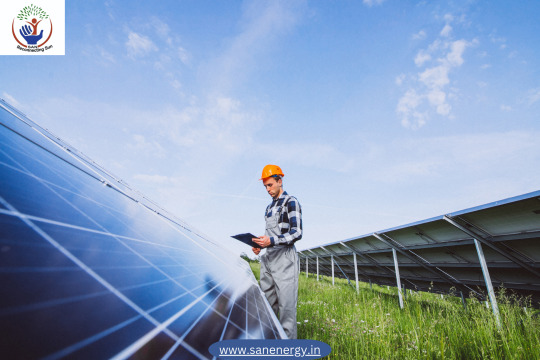
In Noida, the future is bright, thanks to companies like Sanguard Solar. As a leading solar panel manufacturer in Noida, solar street light manufacturer, and solar LED lighting manufacturer, Sanguard Solar is paving the way for a more sustainable and energy-efficient city. With their commitment to quality, innovation, and sustainability, they are indeed a beacon of hope in the journey towards a greener future.
So, whether you're a homeowner, business owner, or a local government representative, consider Sanguard Solar for all your solar energy needs. Embrace the power of the sun and be part of the solution for a cleaner, brighter, and more sustainable Noida.
Contact Now -: http://www.sanenergy.in/
#solar panel manufacturers company in noida#solar panel manufacturer in noida#solar street light manufacturer in noida#solar led street light manufacturer in noida#Solar modern reneweable energy#Rular Solar Renewable energy#EPC solar plant projects#PPC solar plant projects#solar led lighting manufacturers in noida#solar Projects#solar Cells#PV modules#120kw solar panel#330 Solar module#540kw Solar module#LI_ION batteries#54 Amp li-on batteries manufacturers#LI_ION batteries manufactures#Solar Plant#Floating solar plant
1 note
·
View note
Photo

Mecer Solar 330W PV Module Products Characteristics: Widely using the most popular and mature type of modules for on-grid systems. Leading manufacturing technology in the PV industry, strictly controlling the quality of raw materials and the process of producing 100% EL inspection, ensures modules are defects free. Cells binned by current to improve module performance Anti-reflective glass. Not only to increase the light absorption but also to make the module has the function of self-cleaning in water environment, effectively reducing the power loss caused by dust. Outstanding performance in low-light irradiance environments. Excellent mechanical load resistance: Certified to withstand high wind loads(2400pa) and snow loads(5400pa). High salt and ammonia resistance Positive power tcierance:0-+Sw Raw materials and Mechanical Parameters: Type of Cells(mm): poly156.75 x 156.75 NO. of Cells and Connections: 6x12=72 Dimensions(mm)(L*W*H): 1956 X 992 x40 Weight(kg): 22.8 Glass: 3.2mmTempered Glass Encapsulation: EVA Backsheet: Multilayer Composite Aluminium-Frame: Silvery/Black Anodized aluminium alloy Junction-Box: IP67/IP68 Cable: 4mm',900mm Connector: MC4 and MC4 Compatible Package Configuration: 26pcs/pallet SP-330 Performance Parameters: Maximum System Voltage: 1000V Operating Temperature: -45-+so·c Maximum Series Fuse: 20A SP-310 SP-315 SP-320 SP-325 SP-330 SP-335 Maximum Static Load, Front Side (e.x. Snow, Wind): 5400PA Maximum Static Load, Back Side (e.x. Wind): 2400PA Application Grade: Class A Electrical Parameters (Standard Test Condition): Rated Maximum Power (Mp): 330W Power Tolerance: 0-+ 5W Cell Efficiency: 18.7% Open Circuit Voltage (Voc): 47.0V Maximum Power Voltage (Vmp): 37.5V Short Circuit Current (lsc): 9.38A Maximum Power Current (lmp): B.B9A Temperature Coefficient of lsc: +0.06% Temperature Coefficient of Voe: -0.33% Temperature Coefficient of Pmp: -0.45% Standard Test Condition: lrradiance: 1000W/M2, Cell Temperature:25'C, SpectrumAM:1.5 The Electrical Parameters of the module are the average theory figure under the standard test condition, each one exists difference. Can not be treated as the basis of module delivery.
0 notes
Link
NASA and Sierra Space are making progress on the first flight of the company’s Dream Chaser spacecraft to the International Space Station. The uncrewed cargo spaceplane is planned to launch its demonstration mission in 2024 to the orbital complex as part of NASA’s commercial resupply services.Sierra Space NASA and Sierra Space are making progress on the first flight of the company’s Dream Chaser spacecraft to the International Space Station. The uncrewed cargo spaceplane is planned to launch its demonstration mission in 2024 to the orbital complex as part of NASA’s commercial resupply services. Dream Chaser and Shooting Star The Dream Chaser cargo system, manufactured by Sierra Space in Louisville, Colorado, consists of two major elements: the Dream Chaser spacecraft and the Shooting Star cargo module. As a lifting body spacecraft, Dream Chaser is designed to be reused up to 15 times, and is modified from the HL-20 spacecraft developed at NASA’s Langley Research Center in Hampton, Virginia. The spaceplane’s cargo module companion, Shooting Star, is designed to support delivery and disposal of pressurized and unpressurized cargo to and from the space station. The cargo module can be used only once and is disposed of prior to re-entry. The Dream Chaser system will launch with its wings folded inside a five-meter fairing aboard a ULA (United Launch Alliance) Vulcan Centaur rocket from Space Launch Complex 41 at Cape Canaveral Space Force Station in Florida. The fairing panels will protect the spacecraft during ascent but are jettisoned once in orbit. Solar arrays mounted on the cargo module and wings of Dream Chaser are deployed during its autonomous rendezvous to the space station. In the event of a scrub, Dream Chaser is designed to be ready for launch in as little as 24 hours. Mission Overview During its first flight, Sierra Space will conduct in-orbit demonstrations to certify Dream Chaser for future missions. Teams at NASA’s Kennedy Space Center in Florida, NASA’s Johnson Space Center in Houston, and the Dream Chaser Mission Control Center in Louisville, Colorado, will monitor the flight. Sierra Space flight controllers will control the Dream Chaser spacecraft on the launch pad until the spacecraft is handed over to the Sierra Space ground operations team at NASA Kennedy following landing. Far-field demonstrations will be conducted outside the vicinity of the space station before the spacecraft enters the approach ellipsoid, a 2.5-by-1.25-by-1.25-mile (4-by-2-by-2-kilometer) invisible boundary around the orbiting laboratory. These demonstrations will be required before Dream Chaser can enter joint operations with the NASA team at the Mission Control Center in Houston. These include demonstrating attitude control, translational maneuvers, and abort capabilities. Near-field demonstrations, which must happen closer to the space station, include activating and using light detection and ranging (LIDAR) sensors, responding to commands sent from the space station, retreating from the station when commanded, and holding its approach, first at 1,083 feet (330 meters), then 820 feet (250 meters), and finally, at 98 feet (30 meters) from the station. Following successful completion of the demonstrations, Dream Chaser will move towards the space station. As Dream Chaser approaches the orbiting laboratory, it will hold a final time approximately 38 feet (11.5 meters) from the space station, when a station crew member will use Canadarm2 robotic arm to grapple a fixture on the spacecraft’s cargo module before teams on the ground install the cargo module to an Earth-facing port on the Unity or Harmony module. On its first flight to the International Space Station, Dream Chaser is scheduled to deliver over 7,800 pounds of cargo. On future missions, Dream Chaser is being designed to stay attached to the station for up to 75 days and deliver as much as 11,500 pounds of cargo. Cargo can be loaded onto the spacecraft as late as 24 hours prior to launch. Dream Chaser can return over 3,500 pounds of cargo and experiment samples to Earth, while over 8,700 pounds of trash can be disposed of during reentry using its cargo module. Return to Earth Dream Chaser will remain at the space station for about 45 days before it is uninstalled using Canadarm2. The spacecraft can land as quickly as 11 to 15 hours after departure, and there are daily opportunities if weather criteria are met. Landing weather criteria for Dream Chaser generally require crosswinds at less than 17.2 miles per hour (15 knots), headwinds under 23 mph (20 knots), and tailwinds below 11.5 mph (10 knots). Thunderstorms, lightning, and rain within a 20-mile radius of the runway or 10 miles along the approach path are not acceptable conditions for landing. Detailed flight rules will guide controllers in determining whether landing opportunities are favorable. A combination of Dream Chaser’s 26 reaction control system thrusters will fire to commit the spacecraft to deorbit. Dream Chaser will re-enter Earth’s atmosphere and glide to a runway landing at Kennedy’s Launch and Landing Facility in the style of NASA’s space shuttle, becoming the first spacecraft to land at the facility since the final space shuttle flight in 2011. Once Dream Chaser is powered down after landing, the Sierra Space ground operations team will transfer it to the Space System Processing Facility to perform necessary inspections, off-load remaining NASA cargo, and begin the process of preparing it for the next mission. Sierra Space, formerly Sierra Nevada Corporation, was selected in 2016 as NASA’s third commercial cargo resupply spacecraft to service the International Space Station For updates on NASA’s commercial resupply services, visit: https://www.nasa.gov/mission_pages/station/structure/launch/index.html
0 notes
Text
Dholera SIR India’s Greenfield Smart City Leading in Sustainable Development
Dholera SIR earns India’s first Platinum Rating as a Greenfield Industrial Smart City, leading in sustainable development and pioneering key industries in India’s thriving economy.
Dholera SIR is India’s first Greenfield Industrial Smart City to achieve a platinum rating by the Indian Green Building Council (IGBC). Phase 1, called the Activation area, comprises 22.54 Sq Km out of the total 920 Sq Km. The Activation area is ready to accommodate industry and citizens, with more than 72 km of road and utility network on both sides of the roads. It comprises allocated areas for industries, residential, mixed-use, recreation, social infrastructure, and tourism. Land allotment for industries has already begun for contiguous land parcels ranging in size from 1 Acre to 330 Acres and more.

Dholera SIR Project will also play a major role in ushering in the development of the Semiconductor and Display industry in India with a Semicon City within SIR. Renew Power, one of India’s largest renewable energy park developers has taken 100 acres of land and has started phase-wise construction of their solar module and cell manufacturing plant. Along with this, TATA Chemicals Ltd will be setting up a lithium-ion battery manufacturing plant and has taken 126 acres of land. Hindustan Petroleum Corp Ltd is set to establish fuel stations and EV charging stations. To meet the power requirements of the industries, Torrent Power has established a power distribution network in Dholera.

Dholera will offer 360-degree connectivity via Air, Road, Rail and Sea. The world-class 4-lane expressway connecting Dholera with Ahmedabad is under construction and is expected to be completed by the year 2024. The right of way has been acquired for the construction of Metro rail as well in one common corridor. The multi-modal transport system will have a regional goods corridor, public transport corridor, internal transport, Bus Rapid Transport (BRT), and Mass Rapid Transport (MRT). Dholera International Airport, a Greenfield project under implementation, is under construction, and work for phase 1 is already in progress. The airport is expected to be operational by 2025-26, which will initially cater to 3,00,000 passengers and handle more than 20,000 tonnes of cargo approximately per annum. With a 6.5 Km canal with a stormwater management system, citizens will enjoy recreational and leisure activities at the Canal front.

Providing a strong backbone to the sustainable design of Dholera is its Smart water management system. Along with the storm water canal, this robust system features a water treatment plant (WTP) of 50 MLD in Phase 1, a Master Balancing Reservoir (MBR), various Elevated Service Reservoirs in the activation area, a Sewage Treatment Plant (STP) of 10 MLD and a Common Effluent Treatment Plant (CETP) of 20 MLD capacity in Phase 1.
The 4400MW Solar Park project at Dholera is set to change the energy generation game of the country and will help in achieving the national goal of green energy generation of 250 GW by 2030. For the development of the solar park, 1000MW has been allotted to GPCL for implementation; out of this, 300 MW has already been commissioned by TATA Power Company Limited. The power evacuation to the grid is operational, which is laid down by GETCO, a State power transmission company.
youtube
#Dholera Smart City#Dholera SIR#Dholera Investment#Plot In Dholera#Dholera International Airport#Dholera Solar Park#Youtube
0 notes
Text
Metal giant JTL Industries is considering a bonus for shareholders after announcing a Rs 330 crore capex investment.
Punjab-based metal giant JTL Industries recently made significant announcements regarding its expansion plans and potential bonus share issuance. The company disclosed its intention to invest Rs 330 crore in capital expenditures, aimed at increasing its production capacity. Moreover, JTL Industries stated that its board would convene on June 29 to evaluate and potentially approve the issuance of fully paid bonus equity shares to its shareholders, subject to the necessary regulatory and statutory approvals.
In addition to these developments, JTL Industries is expected to consider and endorse its unaudited financial results for the first quarter ending June 30, 2023, encompassing the period from April to June.
Earlier this month, news agency PTI reported that JTL Industries was expanding its existing capacity by 2 lakh tonnes, as part of the ongoing Rs 330 crore capital expenditure initiative taking place at two of its mills. By the end of the 2026–2027 financial year, the company aims to complete a total capacity expansion of 4 lakh tonnes, bringing its overall installed capacity to 10 lakh tonnes.
Precisely, the immediate expansion of 1 lakh tonne each is planned for the Malegaon plant in Maharashtra and the Raipur mill in Chhattisgarh. These enhancements will elevate the output capacity of both facilities to 3 lakh tonnes each, as reported by PTI.
JTL Industries prides itself on being a debt-free company, having maintained this status since its establishment in the 1990s. The Rs 384 crore required for the expansion project was fully funded through a preferential warrants issue in March. Dhruv Singla, the executive director, and chief financial officer, who is also the son of the managing director, Madan Mohan Singla, confirmed that the expansion is entirely debt-free.
As a manufacturer, JTL Industries specializes in producing a wide range of galvanized steel tubes and pipes. Its products cater to various industries such as construction and building materials, core infrastructure, energy and engineering, heavy vehicles, agriculture, water and gas distribution, as well as solar projects.
In summary, JTL Industries is a prominent Punjab-based metal company that recently revealed its capital expenditure plan and potential bonus share issuance. With a commitment to expansion and a focus on galvanized steel tubes and pipes, the company aims to serve diverse industries by meeting their construction, infrastructure, energy, and agricultural needs.
JTL Industries Ltd (JTL) has operated in the structural steel tubes and pipes business for the past 30 years. Led by an experienced management team with over three decades of industry expertise, JTL has established itself as a prominent player in the market. The company specializes in manufacturing ERW black and hollow steel tubes and pipes, along with value-added products like solar module mounting structures/panels and hot-dipped galvanized steel tubes and pipes.
With a focus on expansion, JTL has consistently increased its capacity, reaching 0.586 million tonnes (MT) in FY23, compared to 0.4 MT in FY22. The company’s efforts have paid off as it now boasts a global presence, serving customers across five continents and over 20 countries. Furthermore, JTL has a robust domestic distribution network comprising over 800 distributors.
One of JTL’s key strengths is its strategically located manufacturing facilities. The company operates four state-of-the-art plants geographically dispersed throughout India. This geographical advantage enables JTL to source raw materials at competitive prices and facilitates its sales and market expansion efforts. The plants are situated in Gholu Mazra and Mandi Gobindgarh in Punjab, Mangaon in Maharashtra, and Raipur, which was recently acquired through amalgamation with Chetan Industries, a promoter-held company. These facilities increase JTL’s production capacity, providing cost synergies and access to different markets.
Looking ahead, JTL has aggressive expansion and growth plans. The Indian structural tubes market shows promising potential, projected to grow from approximately 13 million tonnes in CY23 to 22 million tonnes by CY30. This growth is driven by the government’s emphasis on infrastructure development, which fuels the demand for structural steel. JTL aims to capitalize on this opportunity by expanding its capacity from the current 0.586 MT to 1 MT by FY25. Additionally, the company plans to increase its value-added products’ share from 31% in FY23 to 50% by FY25. To achieve these goals, JTL will add capacity at its Mangaon and Raipur plants and enhance its Mandi facility.
JTL’s expansion initiatives are supported by stable operating profits and returns. Despite the expansion phase, the company maintained healthy revenue, EBITDA, and PAT growth rates of 14%, 45%, and 48% YoY, respectively, in FY23. While the return on equity (ROE) and return on capital employed (ROCE) moderated compared to the previous year, they remained at decent levels, standing at 29.6% and 22.1% in FY23, respectively. JTL expects to sustain its growth momentum with projected revenue, EBITDA, and PAT compound annual growth rates (CAGRs) of 50%, 45%, and 51% over FY23–25E. This growth will be driven by increased sales volumes and a higher share of value-added products.
In terms of valuation, JTL’s strong return ratios and growth potential justify a reasonable valuation of 22 times its FY25 earnings per share (EPS). This valuation approach leads to a one-year forward target price of Rs 470 per share, implying a potential upside of 36% from the current levels. It is important to note that JTL is in an aggressive growth phase, and although its ROE and ROCE may moderate, they are expected to remain around 20% over FY24–26E.
Overall, JTL Industries Ltd is a company with a solid track record, experienced management, wide distribution reach, and a clear growth strategy. With its expanding capacity, the increasing share of value-added products, and strong market positioning, JTL is well-positioned to benefit from the growing demand for structural steel tubes and pipes in India and globally.
0 notes
Text
Solar Panel Navisol

#Get More Power with Excellent Efficiency with Navitas Polycrystalline modules.#Our Navisol Series of Polycrystalline Modules of 330 Watts and 335 Watts is the ideal solution for rooftop as well as ground mount installa#utility-scale projects. We provide BIS & IEC certified Navisol series which is universally#recognized and respected throughout the solar industry.#available at attractive prices for immediate dispatch!#Contact us now :#Mo. : 9555945557 | 9970221177#Email : [email protected]#solarinstallation#solarpanelwholesaler#ongridsolar#solarpanel#reusableenergies#solarservices#solarcompany#solarrooftop#solarsystem#solarhome#solarcompanies#gosolar#gogreen#cleanenergy#sunveerasolar#enviroment#technology#sunveera#solarcompanyinjalgaon#jalgaon#solarpune#solaraurangabad
0 notes
Text
How much weight can a solar panels take
Having solar panels that are heavy should not surprise you. As serious pieces of equipment, their weight can add up when they are installed on a roof. The fact that most solid, well-constructed roofs can hold a reasonable amount of solar panels is reassuring.
Can you walk on solar panels?
Answering both questions is yes and no. While walking on solar panels is possible, it is not recommended. A solar panel is always a smart move when it comes to sustainable energy. Your roof will be strengthened, you will be lessening your carbon footprint, and you will save on electricity costs. The maintenance of these panels, although they have many benefits, can be painful. Solar panel advice you will come across often suggests you should avoid walking on them in order to keep them in good condition. Experts would definitely recommend this. Your foot weight is the most important factor to consider. Walking on a solar panel causes significant damage over time because the average human step weighs about 100 pounds. Walking can cause the glass to break or pop off of the frame, which will then lead to leakage and further damage in the future. Almost immediately after a solar cell breaks, its power output decreases far more rapidly than it would otherwise (all solar panels diminish with time). During a period of change in temperature (such as the difference between day and night, or the change in seasons), materials around the crack expand and contract, further aggravating the problem.
What is the maximum weight a solar panel can hold? How strong are solar panels?
Load test, mechanical Mechanical Load Testing is performed on PV modules to determine whether they can withstand a wind load and static snow. The PV modules must be tested for their resistance to wind and snow loads as part of the certification process. Most solar panels are capable of withstanding wind speeds over 150 miles per hour. Some solar panels can withstand wind speeds of up to 245 miles per hour. Do not be alarmed if tree branches strike your solar panels. Your solar panels should not be located near trees if they are installed properly. During the test, 3 cycles of 2400 pa pressure are performed for 1 hour, followed by 3 cycles of 2400 pa traction. The last pressure cycle uses 5400 pa to stimulate the formation of large quantities of snow.
Are roof solar panels heavy?
When it comes to determining whether a roof can support solar panels, weight is a key factor. PV modules for residential use typically weigh about 40 pounds each, but depending on the manufacturer, they can weigh anywhere between 33 pounds and 50 pounds. With commercial photovoltaic modules of standard size. In general, the dimensions are 78 inches by 39 inches or 6.5 feet by 3.25 feet. Solar panels used in commercial applications usually have 72 solar cells. PV modules for homes (residential) are generally smaller, measuring approximately 65 inches by 39 inches or 5.4 feet by 3.25 feet on average. 60 solar cells typically make up a module.
How do you calculate the weight of a solar panel?
An average solar panel above 330 watts is 2 meters by one meters (6.5 feet by 3.25 feet) and weighs approximately 25 kilograms. Solar panels on your roof exert a maximum weight of 1.8 kg per square foot. The surface area of a 330 watt solar panel is 21 sq ft.
Solar panels weigh how much? How heavy are solar panels?
We hear this question a lot. Solar panels and mounting equipment weigh an average of 2-4 pounds per square foot (between 10 and 20 kilograms per square meter), which is usually within the roof's ability to accommodate. The weight added per square foot is about five pounds for flat roofs. There is also the issue of point loads, given that installers often strive to minimize the number of mounting sites to minimize leakage risks. A poor weight distribution can result in substantial point loads if the installer fails to properly distribute the weight. 2.8 pounds per square foot are added by solar panels on pitched roofs.
Can solar panels damage my roof? Will solar panels damage my roof?
Having solar panels on your roof isn't necessarily harmful. Even so, they are large pieces of equipment and can cause damage if they are not installed correctly and on the right types of roof. There are two key ways to protect your roof from solar panel damage:
Verify the installer's license and credentials
Roofing with solar panels is a relatively new concept. The result is that many people out there don't know how to properly install solar panels. If you desire to install solar panels (correctly), be sure to seek out a licensed, experienced professional. Inspections are available A solar panel cannot be installed on every roof. So that you can absorb the most sunlight, the roof should face either south or west. Having a roof that is well-equipped for solar panels is also very important. Having a solar panel might not be a good idea if your roof is in bad shape, since they are heavy pieces of equipment.
How Will the Weight of Snow on Your Panels Impact Your Roof? How much snow can my panels hold?
Since snow is easily blown off by wind, a dusting of snow does not have much impact on solar panels. A sparse coating allows the light to forward scatter, allowing electricity to be produced. Even if the snow only slightly exposes the panel, power generation is once again possible once the snow begins to slide. A light snow on your panels will not cause any damage, except under the most extreme circumstances. The majority of panels can withstand 5,000 Pascals (Pa), which represents two to four feet of snow, depending on the density. It is unlikely that your panels will be damaged by snowfall unless it is persistent and severe.
Do solar panels get damaged in hail? What happens if a solar panel gets hit by hail?
Some types of solar panels can be damaged by hail, but the likelihood is very small, and these events are extremely rare. Tempered glass is commonly used in solar-electric modules and solar hot water collectors. It can withstand hail stones up to one inch in diameter travelling at 50 miles per hour under standard test conditions. It is possible to have a glancing blow to your array even in locations where large hail is rare. For example, panels are usually angled south (in the northern hemisphere), which is usually not in the prevailing directions for severe hailstorms. You can also make some further choices that will minimize your chances of damage if you are still a bit nervous about it. Use thin-film (or amorphous) photovoltaic panels to generate solar electricity. Rocks and hail are unlikely to damage this substrate due to its flexible plastic material. In the event of damage to the array, the performance will not be significantly affected. As an alternative to mounting flat plate or evacuated tube collectors on the roof eaves, solar hot water systems can be mounted vertically on south-facing walls, which incorporate some shelter from the roof eaves instead of remaining almost completely exposed. As a general rule, damage to your solar equipment is covered by your homeowner's insurance policy, although you will probably need to consult with your insurance agent to determine whether an endorsement is needed. We are aware that hail and snow can be a rare sight in Florida but we thought it should be added regardless. The more information you have about your panels the better, don't you think? For more information regarding solar panel weight, click here from https://greensolarroofers.com/all-posts/how-much-weight-can-a-solar-panels-take/
1 note
·
View note
Text
9.9 kw Solar System | Best Solar Panel Power Inverter
9.9 kw Solar Panel system is state-of-art solar power production. It uses a wide range of the latest technology to optimize your investment At 9.9 kw solar system.Do you want to put in a solar panel system for your home? Then you've come to the right place.Solar Panel brings together some of the industry's most knowledgeable minds to assist you with your 9.9 kw Solar Panel System.If you're unsure how to get started or how many panels you'll need, our team has compiled the majority of that information here for your convenience.
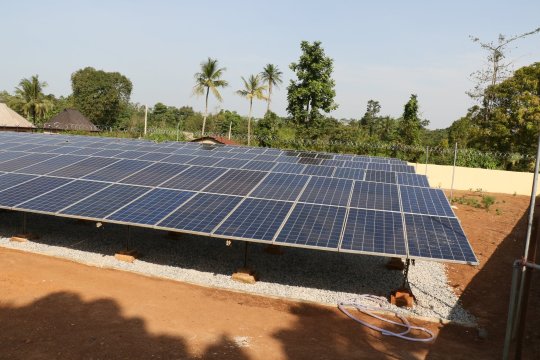
The 9.9 kw solar system is normally one of the most sought-after solutions for any small business in Australia. The 9.9-kilowatt solar system is quite popular due to its high efficiency in solar energy production. Because of the increased output, investing in it will almost certainly yield a higher return in terms of value. It has a long lifespan and requires little maintenance.When exposed to the sun, the 9.9 KW solar system consists of 30 panels that provide 330 W of energy.
While it's safe to estimate that your 9.9 kw solar system in Melbourne may generate up to 44 units per day, it's crucial to remember that the geographical location, panel angle, and weather conditions all play a part in the actual quantity of output. Our professionals are here to help you get the most out of your investment by providing you with all the information you need and advising you on the ideal position and location for your 9.9 kw solar system installation.
The 9.9 kw Solar Panel System in Melbourne is ideal for small businesses and commercial properties with an electricity consumption of less than 9.9 kw solar system. This can easily power your office or business property without adding to the burden of monthly electricity expenses. 9.9 kw solar system can draw 33 kWh per day on average from the sun. A 9.9 kw solar system can be coupled with 26 to 34 modules. A 9.9 kw solar system is a great option and the most commonly used solar system in Sydney. Know in detail about 9.9 kw solar panel system.
The immediate reduction in energy expenses is one of the advantages of installing 9.9 kw solar system on your commercial property. The day these solar systems are fully built and ready to harness electricity, the return on investment begins. You can devote your savings to increasing your business now that you've paid off this major piece of your electricity costs.9.9 kW solar system can generate a power of 33-35 kWh per day. · The actual power generated differs on a number of factors.
The 9.9 kw solar system can be installed by anyone who wants to run an office or business property without relying on the grid for power. It has the potential to generate enough energy to significantly reduce power expenses. Furthermore, it can (over time) give you a clear picture of your monthly power bill investment by handling the majority of it for you. The best part of installing your own 9.9 kw solar system for power in Australia is that it begins paying off your investment as soon as it is installed. Money saved is money gained, and because you will save a lot of money, you may use it towards growing your business.
1 note
·
View note
Text
UTL Solar Panel for Homes and Commercial Buildings

A solar panel is a device that converts sunlight into electricity. They are made of a semi-transparent material that allows light to pass through but not enough to allow heat to escape. Solar panels are commonly used in homes and commercial buildings, including schools, hospitals, and airports. Solar panels are typically installed on rooftops and can last for up to 30 years before they need to be replaced.
UTL solar panels are the latest technology and most innovative solar panels. UTL's Solar Panels are a very economical solar product and are more suitable for Indian environmental conditions.
25 Year industry leading linear power output warranty. Positive power tolerance up to 5W. Excellent module efficiency up to 17.0%. AR Coated tempered glass anti-reflective module surface.
Available in:
40-Watt Solar Panel
60-Watt Solar Panel
100-Watt Solar Panel
160-Watt Solar Panel
330-Watt Solar Panel
335-Watt Solar Panel
165-Watt Mono Perc Solar Panel
390-Watt Mono Perc Solar Panel
Key Features:
Excellent power generation even in low light irradiation
3.2 mm toughened textured glass for front protection.
Highly efficient solar panels with more than 18% efficiency.
Available in various power ratings with 36/72 cells.
Superior performance in all atmospheres.
Anodized aluminum alloy frame for protection.
Now buy UTL Solar Panels on EMI with your Debit or Credit Card.
0 notes
Text
1 KWh Off Grid Solar Kit
The 1 kw off-grid solar system kit by Mint Solar is designed to give 24 hour power to houses, independent floors, villas, and offices. We recommend this system if you wish to run all your electrical appliances using solar energy without relying on grid electricity, such as fans, lights, televisions, and refrigerators.4-5 units generation every day.

ROI in 5.5 years by saving 1500 kWh of electricity each month.
Powerful solar system that runs everything but the air conditioner using solar energy. About 4-5 units are generated per day. Installation requires 100 square feet of rooftop space.
Service warranty----- 25 Years
Inverter-----NXG 1625
Battery----- 150 Ah (2 nos.)
Solar Panels -----Mint Solar 330 wp * 3 [3 (P)]
Solar Panel Stand -----3*330 panel stand
Accessories -----Solar Cable & DCDB
Inverter model----- NXG 1800
Inverter capacity -----1 kW
Efficiency Module ----->16%
0 notes
Text
A Guide to Solar Panel Maintenance
Considering hiring a solar panel maintenance Sydney company? There are several factors to consider, including the cost, frequency, cleaning and inspection of your solar panels. In addition to the price, you should also look into the performance of your inverter. After all, it's not like your solar panel will break down on its own. Regular maintenance is essential to keep your solar panels operating at optimal efficiency and prolong their life. Here's a guide to solar panel maintenance Sydney:
Cost of Solar Panel Maintenance
In addition to the cleaning process, the solar panels must be protected from the elements. Snow and other debris can cause permanent damage to the panels, so it is recommended that you wait until the snow melts before cleaning them. If you have to clean them regularly, invest in a snow rake and take extra precautions when going up on the roof. Some experts recommend hiring a professional solar panel cleaning company. They can provide comprehensive solar panel cleaning services at a cost-effective price.
The cost of solar panel cleaning depends on the type and size of the solar panels. A two-kilowatt system with 10 solar panels requires around $150, while a high-end panel will cost between $330 and $4,000. Professional solar panel cleaners invest in the right equipment and safety gear to provide quality service at affordable rates. They can also inspect and suggest necessary repairs or replacements. Hiring a professional is important for your safety and peace of mind.
Inspections
If you are not comfortable doing the annual maintenance of your solar system on your own, you can always enlist the services of a solar electrician in Sydney. GSES has a nationwide network of certified inspectors who can confirm warranty claims for PV modules and inverters. The company has developed a unique process for warranty testing that is suited to individual client requirements. It is important to schedule regular maintenance checks to avoid costly breakdowns and unnecessary repairs.
Performing routine inspections is a must for any solar panel. Solar panels collect dirt and debris over time. If they are installed at a five-degree angle, for example, they are easily cleared by heavy rainfall. With regular inspections, a solar panel can function without suffering material soiling losses. Moreover, improvements in solar panel technology have made them more resistant to dirt build-up and shading. Despite this, you should still consider engaging the services of a qualified electrician in Sydney to do periodic inspections on your panels.
Cleaning
You can clean your solar panels on a sunny day using water, but make sure not to use a high-pressure hose, as this may damage the glass. To remove any remaining residue, scrub the panels gently with a soft brush. Rinse off the soapy water thoroughly, and turn them back on to check their efficiency. If your panels are protected by a warranty, you may be able to have them cleaned for free.
In general, solar panels with flat surfaces will accumulate more surface soiling than ones with sloped edges. Additionally, people living in areas with high levels of dust, such as those near farms and airports, will need to frequently clean them. In places with high levels of pollution, moss may grow on panels. You can also do this regularly to increase the efficiency of your panels. However, be careful to follow the instructions on the packaging. If you can't find instructions on how to clean your solar panels, you can ask a friend or neighbor to clean them for you.
Inverter Performance
When your solar panels stop producing the expected amount of energy, they are likely a sign that something is wrong. A red light on the solar inverter may be accompanied by an error message that explains the cause. A common cause of a red light on the solar inverter is moisture getting into the system. This can occur during periods of rain or on mornings when outside dew is present. Once the panels dry, the error message should disappear.
The best way to determine if your inverter is failing is to measure its power output. While this is not an exact science, it is still possible to measure the performance of your solar panel system. While this method takes some time to gather, it does provide an accurate comparison of the energy generated from your panels. In general, solar energy output is fairly constant over the course of a year. However, unusual weather conditions could throw this comparison off.
Solar Safari are Sydney based Clean Energy Council Approved Solar Retailer, focused on tailoring solutions to meet your residential or commercial requirements. Our team of dedicated and experienced professionals have in-depth knowledge about Sydney’s Solar conditions and will design a system to suit your specific needs.
#bird proofing solar panels sydney#solar panels sydney reviews#solar panel maintenance sydney#nsw solar rebate calculator#solar panels sydney cost#are solar panels worth the cost#best solar panels solar quotes#buy solar panels sydney
0 notes
Text
300W-340W Poly Solar Panel With 72 Pieces Solar Cells
https://www.solarbornenergy.com/products/300w-340w-poly-solar-panel-with-72-pieces-solar-cells.html
The solar panels composed of 72 cells are 300w, 305w, 310w, 315w, 320w, 325w, 330w, 335w, 340w. This is currently the most popular style of Solarborn polycrystalline solar panels. We adhere to industry standards and solar panels are available. Quickly connect cables and work in series or parallel. Covering the world, 330w solar panels were often used in large-scale photovoltaic power plants in the past. Later, due to the relationship between price and output, most power stations gradually replaced polycrystalline with monocrystalline crystal.
Parameter Of 300W-340W Poly Solar Panel With 72 Pieces Solar Cells
Electrical Characteristics Of 300W Poly Solar Panel With 72 Pieces Solar Cells
Module Type
SLB72P6-300
Maximum Power (W)
300
Tolerance Wattage (W)
0~+5
Optimum Power Voltage (VMP)
37.42
Optimum Operating Current (IMP)
8.02
Open Circuit Voltage (VOC)
44.48
Short Circuit Current (ISC)
8.58
Module Efficiency (%)
17.3
Electrical Characteristics Of 310W Poly Solar Panel With 72 Pieces Solar Cells
Module Type
SLB72P6-310
Maximum Power (W)
310
Tolerance Wattage (W)
0~+5
Optimum Power Voltage (VMP)
37.76
Optimum Operating Current (IMP)
8.21
Open Circuit Voltage (VOC)
44.81
Short Circuit Current (ISC)
8.79
Module Efficiency (%)
15.98
Electrical Characteristics Of 315W Poly Solar Panel With 72 Pieces Solar Cells
Module Type
SLB72P6-315
Maximum Power (W)
315
Tolerance Wattage (W)
0~+5
Optimum Power Voltage (VMP)
37.94
Optimum Operating Current (IMP)
8.3
Open Circuit Voltage (VOC)
44.98
Short Circuit Current (ISC)
8.88
Module Efficiency (%)
16.23
Electrical Characteristics Of 320W Poly Solar Panel With 72 Pieces Solar Cells
Module Type
SLB72P6-320
Maximum Power (W)
320
Tolerance Wattage (W)
0~+5
Optimum Power Voltage (VMP)
38.12
Optimum Operating Current (IMP)
8.39
Open Circuit Voltage (VOC)
45.15
Short Circuit Current (ISC)
8.98
Module Efficiency (%)
16.49
Electrical Characteristics Of 325W Poly Solar Panel With 72 Pieces Solar Cells
Module Type
SLB72P6-325
Maximum Power (W)
325
Tolerance Wattage (W)
0~+5
Optimum Power Voltage (VMP)
38.3
Optimum Operating Current (IMP)
8.49
Open Circuit Voltage (VOC)
45.32
Short Circuit Current (ISC)
9.08
Module Efficiency (%)
16.75
Electrical Characteristics Of 330W Poly Solar Panel With 72 Pieces Solar Cells
Module Type
SLB72P6-330
Maximum Power (W)
330
Tolerance Wattage (W)
0~+5
Optimum Power Voltage (VMP)
38.48
Optimum Operating Current (IMP)
8.58
Open Circuit Voltage (VOC)
45.49
Short Circuit Current (ISC)
9.18
Module Efficiency (%)
17.01
Electrical Characteristics Of 335W Poly Solar Panel With 72 Pieces Solar Cells
Module Type
SLB72P6-335
Maximum Power (W)
335
Tolerance Wattage (W)
0~+5
Optimum Power Voltage (VMP)
38.67
Optimum Operating Current (IMP)
8.66
Open Circuit Voltage (VOC)
45.66
Short Circuit Current (ISC)
9.27
Module Efficiency (%)
17.26
Electrical Characteristics Of 340W Poly Solar Panel With 72 Pieces Solar Cells
Module Type
SLB72P6-340
Maximum Power (W)
340
Tolerance Wattage (W)
0~+5
Optimum Power Voltage (VMP)
38.73
Optimum Operating Current (IMP)
8.78
Open Circuit Voltage (VOC)
45.73
Short Circuit Current (ISC)
9.39
Module Efficiency (%)
17.26

0 notes
Text
Advantages And Disadvantages of Floating Solar Systems
Advantages of floating Solar systems:
1. Rational utilization of land resources: comprehensive utilization rate of land can be improved by using lakes, mining subsidence areas and abandoned deep mines.
2. Increased power generation: Water surface has cooling and mirror reflection functions for photovoltaic modules, and the power generation of the floating solar system/ floating solar structure is significantly higher than that of the ground photovoltaic system.
3. Environmental protection: covering the solar panels on the water can reduce the evaporation of the water surface and inhibit the reproduction of algae in the water, which is conducive to the protection of water resources.
4. Little dust. Easy to clean. It can avoid the weed shadow shade.
Disadvantages of floating PV systems:
1. Relatively huge difficulty in construction, operation and maintenance.
2. The equipment has high requirements for anti-corrosion and waterproof and PID resistance.
3. High cost of comprehensive development of the floating PV project.
4. Uncertainty exists in the way of declaration scale and land use policy.
Forms of water photovoltaic:
1. Piling type (water depth ≤3m)
2. Floating type (water depth >3m)
1) Floating piles
2) Independent buoys
3) Standard buoys
4) Float tanks + steel walkway plates
Comparison of different forms (actual case data)
1. Basic information about floating solar systems project
The floating solar systems project was located in an artificial lake with a water area of about 330 mu, a water depth of about 5m and a water level difference of 0.5m. The module inclination angle is 23°, and the installed capacity is 8.5MW. It was connected to the grid in December 2015. It adopted the standard buoy, custom buoy, custom buoyancy box and a variety of floating body forms. Place on the shore of the booster, and combine the underwater cable and bridge with a high voltage line.
2. Cost comparison
The cost of pile foundation is related to pile height, and the cost increases by about 0.15 yuan /W for each 1m increase in water depth.
3. Development trend
The existing water surface photovoltaic scale is small. The "fixed piling + fixed scaffolding" was mainly used in the shallow water area (within about 3m). The "fixed piling + tracking scaffolding" was used only in a small number of shallow water areas.
The deep-water floating type (about 3-10 meters) is still in the demonstration stage, and the technology maturity needs to be improved. It is an important development direction of the future water surface photovoltaic.
The limits of deep water zones will be broken and the number of floating applications will be increased in the future.
As Tripsolar is also solar bracket manufacturer, we welcome bulk order inquiries. If you are looking for a solar mounting bracket supplier, Tripsolar is your best choice, as one of the best solar bracket manufacturer.
0 notes
Text
Solar Panels in Jalgaon
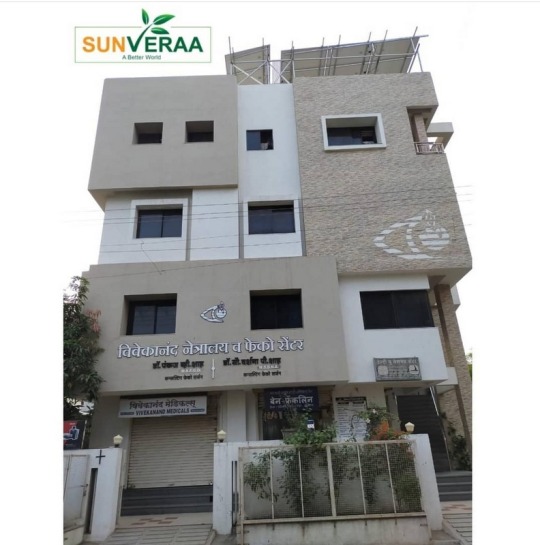

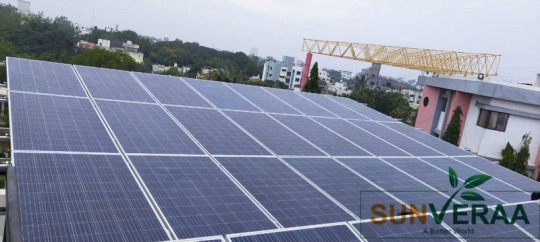
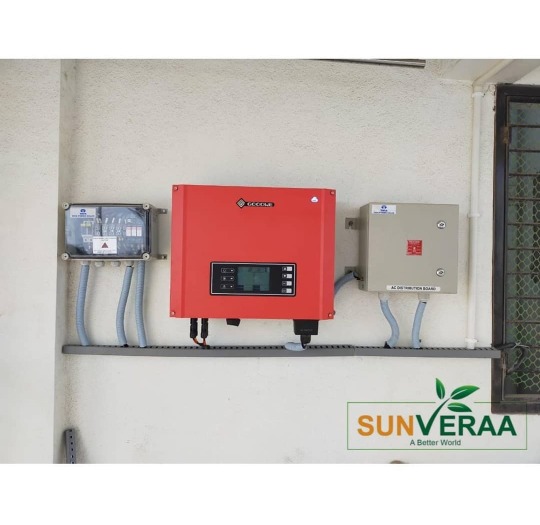
#Another 10Kw solar On Grid system integrated at Vivekanand naitralay#beside golds gym#jalgaon.#The Solar system consist of#tata solar modules of 330 watt each and#goodwe inverter with complete surge protection device.#We strive towards a better world!#solarpower#solarbusiness#solar#solarenergy#renewableenergy#solarpanels#greenenergy#energy#climatechange#renewables#communityenergy#environment#ownyoursun#home#commercialuse#saveelectricity#savemoney
0 notes
Text
G1 Solar Panels
https://www.sunriseenergy.cn/products/g1-solar-panels/

Sunrise G1 solar panel, using 158.75mm monocrystalline cells, product customization includes full black double-sided double-glass, power grade is divided into 325-345w, 390-415w two grades, the product has the characteristics of anti-hot spot, better power generation performance and reliability.
Monocrystalline 330-415w high-efficiency series
This series of modules, with two types of 120 and 144 pieces, are precision encapsulated with multi-grid half-sheet technology, with a 25-year product line warranty, 12-year product material and process warranty, and customizable line length, and the products are certified by TUV/BIS/INMETRO/PV CYCLE/CE/CQC/CSI/ISO.
Monocrystalline 325-410w Jellyfish Series
This series of modules, with two versions of 120,144, unique double-sided power generation technology, up to 30% power generation gain, monocrystalline multi-main gate half-sheet technology, anti-PID guarantee, front static load 5400pa, back static load 2400pa, with 25 years product line warranty, 12 years product material and process warranty, line length can be customized, products through TUV/BIS/ INMETRO/PV CYCLE/CE/CQC/CSI/ISO certifications.
Types of the G1 Solar Panels For Sale
G1 120cells 330-345w Solar Panel
The product uses multi-main gate high-efficiency PERC batteries to combine battery semi-technical, effectively reducing monovato system costs; while battery semi-technical effectively reduces the risk of hot spots in high power components, exhibiting better power generation performance and reliability in system applications.
Dimension
1684×1002×35mm
Weight
19.1kg
No. of cells
120
Rated Maximum Power
345w
Maximum Efficiency
20.45%
Junction Box
IP≥68, TÜV&UL
Maximum System Voltage
DC1000/DC1500
Operating Temperature
-40℃ to 85℃
Cable&Connector
4mm2, EVO2 / EVO2 Compatible
G1 144cells 395-415w Solar Panel
MBB and PERC cell tech are used on this product, combined with half cell technology, effectively reduce the cost of the single-watt system; Can respond to the residential roof, small industrial and commercial roof, large ground power station constantly rising high efficiency and diversified needs.
Dimension
2008×1002×35mm
Weight
22.4kg
No. of cells
144
Rated Maximum Power
415w
Maximum Efficiency
20.63%
Junction Box
IP≥68, TÜV&UL
Maximum System Voltage
DC1000/DC1500
Operating Temperature
-40℃ to 85℃
Cable&Connector
4mm2, EVO2 / EVO2 Compatible
This product matches different installation conditions, takes into account high adaptability and high compatibility, with mature support and inverter solutions, and is specially designed for centralized ground power stations. Bifacial technology could achieve a maximum of 30% efficiency power from the backside.
Dimension
1684×1002×35
Weight
19.1kg
No. of cells
120
Rated Maximum Power
340w
Maximum Efficiency
20.15%
Junction Box
IP≥68, TÜV&UL
Maximum System Voltage
DC1000/DC1500
Operating Temperature
-40℃ to 85℃
Cable&Connector
4mm2, EVO2 / EVO2 Compatibility
G1 144cells 390-410w Bifacial Solar Panel
This product matches different installation conditions, takes into account high adaptability and high compatibility, with mature support and inverter solutions, and is specially designed for centralized ground power stations. Bifacial technology could achieve a maximum of 30% efficiency power from the backside.
Dimension
2008×1002×35mm
Weight
22.4kg
No. of cells
144
Rated Maximum Power
410w
Maximum Efficiency
20.38%
Junction Box
IP≥68, TÜV&UL
Maximum System Voltage
DC1000/DC1500
Operating Temperature
-40℃ to 85℃
Cable&Connector
4mm2, EVO2 / EVO2 Compatible
0 notes